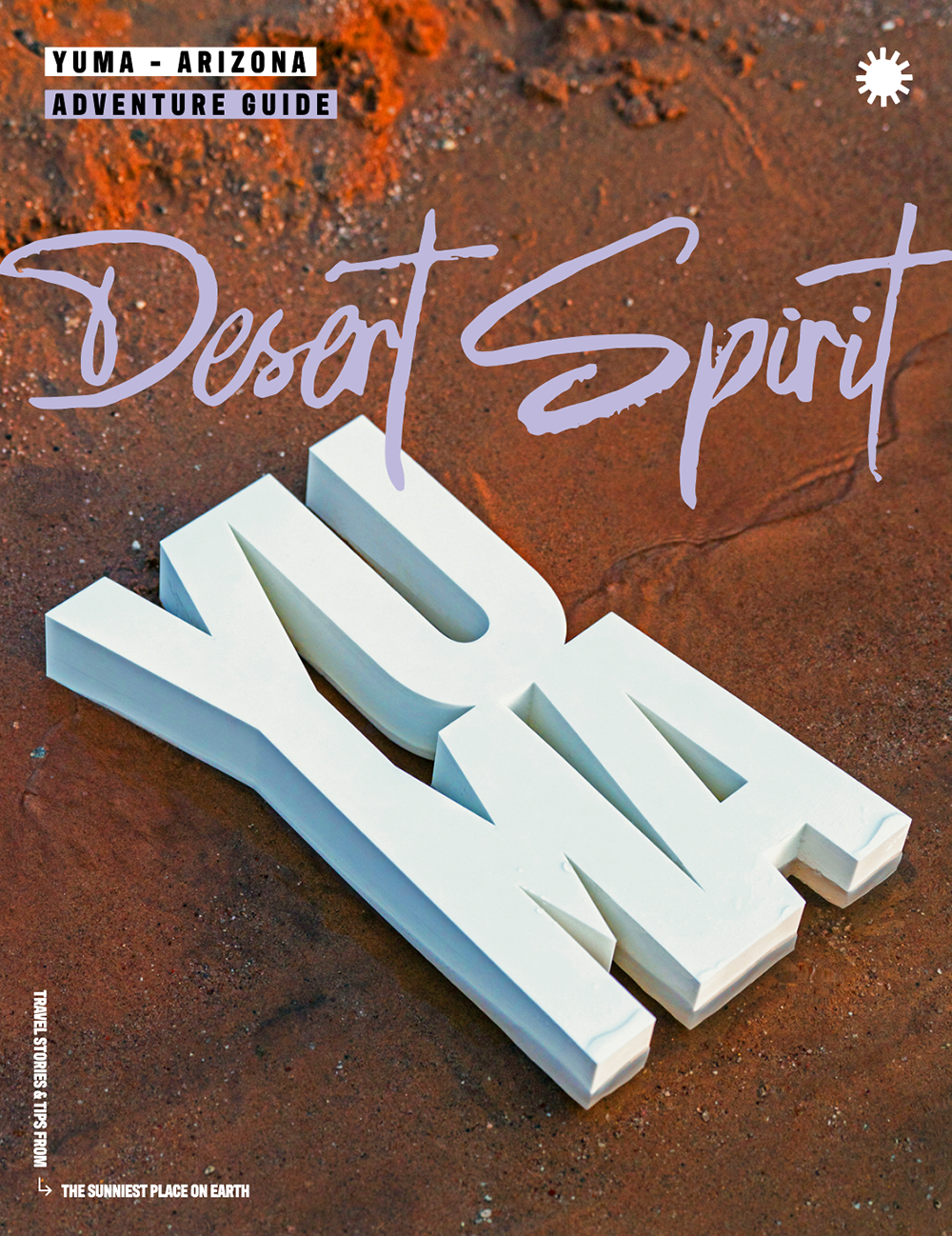Military
Yuma County is home to two premier military installations, Marine Corps Air Station Yuma and U.S. Army Yuma Proving Ground. The military is the second largest contributor to the local economy after agriculture.
MCAS:
The busiest air station in the Marine Corps, MCAS Yuma supports 80 percent of the Corps' air-to-ground aviation training because of its access to 2.8 million acres of training ranges and superb flying weather.
Each year, approximately 100 aviation units deploy here for training, bringing about 14,000 personnel and 600 aircraft to Yuma for periods lasting from a few days to seven weeks. One of the main contributors to that influx is the Weapons and Tactics Instructor course, hosted twice a year by Aviation Weapons and Tactics Squadron 1.
The air station also is home to Marine Aircraft Group-13, Marine Wing Support Squadron-371, Marine Fighter Training Squadron-401, Marine Air Control Squadron-1 and Combat Service Support Detachment-16.
MCAS Yuma also is the only joint-use air station in the Marine Corps, sharing facilities with Yuma International Airport. MCAS maintains the airport's runways and taxiways, and provides air traffic control, security and emergency services for both "sides" of the airport. The main runway at MCAS Yuma is 13,300 feet long and contains enough concrete to pave 37 miles of two-lane highway.
The biennial Yuma Air Show at the air station is one of the community's most popular events. See YumaAirshow.com for updated info on show date and features.
YPG:
Yuma County's largest single civilian employer, Yuma Proving Ground traces its history to World War II.
At 1,300 square miles, YPG today is one of the world's largest military installations, hosting up to 100 tests simultaneously. Every year, tens of thousands of artillery, mortar and missile rounds are fired, 36,000 parachute drops take place, over 130,000 test miles are driven, and nearly 4000 air sorties are flown.
YPG has had a huge and varied testing workload over its history, including the Apache helicopter, M-1 Abrams tank, Bradley Fighting Vehicle, Stryker armored vehicle, virtually all of the Army's artillery and ground weapon systems, mine, countermine and demolitions testing and the global positioning system (GPS) now used worldwide.
YPG also is home to the Military Freefall School, a joint forces training school covering all aspects of military parachuting. Through a joint-use agreement with General Motors, a new hot-weather test track complex opened at YPG in 2009. The U.S. Air Force operates a helium-filled aerostat balloon in YPG airspace, part of a radar "fence" guarding against planes smuggling drugs across the border.
Between test customers, training units, government and foreign dignitaries, local organizations, and school groups, YPG now hosts more than 17,000 visitors every year, making it a substantial contributor to the local hospitality industry.
The Heritage Center, is currently closed until further notice (update: January 2023).
All YPG visitors who do not possess a military identification card or Common Access Card must undergo a computer background check to enter YPG. These checks are conducted at the new Visitor Control Center at the Wahner Brooks Interpretive Display on Imperial Dam Road and normally take no longer than 15 minutes. Since these background checks require U.S. or Canadian identification, they cannot be conducted on visitors who are not U.S. or Canadian citizens. All visitors must also possess: 1) driver's license; 2) vehicle registration; 3) proof of insurance.
Making aviation and military history
Probably because of its perfect flying weather, Yuma was a favorite with early aviators: The first plane to land in Arizona touched down here in October 25, 1911, when Robert Fowler made a stop on a cross-country flight from Santa Monica to Florida.
Piloting a Wright Model B biplane (also known as a "Cole Flyer") with an engine rented from the Wright Brothers, Fowler landed in Yuma near what was then a ball field. In 2010, a new statue of Fowler was dedicated at the site (195 S. 4th Avenue, in front of the Yuma Landing Restaurant).
Fly Field (now Marine Corps Air Station Yuma) was one of the first airports in Arizona and in 1928 hosted 25 planes in a cross-country air race. In 1929, the famed aviatrix Amelia Earhart ran off the runway in Yuma while competing in the first Women's Air Derby.
But our modern-day military installations really trace their roots to World War II: Permanent runways had been authorized earlier, now Fly Field became Yuma Army Air Base. Pilots flew AT-6 single-engine trainers, T-17 multi-engine trainers and B-17 Flying Fortresses at one of the busiest flight schools in the nation.
In 1942, Major Gen. George S. Patton established the Desert Training Center across a swath of desert from the Mexican border to Nevada. More than one million men trained for combat at camps including Hyder, Horn, Laguna and Pilot Knob in the Yuma area.
The Army opened the Yuma Test Branch in 1943 near the new Imperial Dam. Because the river's flow could be controlled there, it was the perfect spot to test bridging equipment. Tires made from synthetic rubber and other equipment also were tested in the Imperial Sand Dunes.
With the end of the war, both facilities were temporarily mothballed. But as the cold war warmed up, the Yuma air field was reactivated in 1951 as a U.S. Air Force facility. Renamed Vincent Air Force Base in 1956, it was signed over to the Navy in 1959 and has been a Marine Corps facility ever since.
Also in 1951, the Yuma Test Branch reopened - with a greatly expanded mission - as Yuma Proving Ground.
Yuma Airshow
Since 1962, this annual celebration of aviation has been a hallmark event for both MCAS Yuma and the City of Yuma. The Yuma Airshow features both military and civilian demonstrations, modern aircraft displays, ground performances, and other guest performances such as the Patriots Jet Team, skydiving...
Read More


